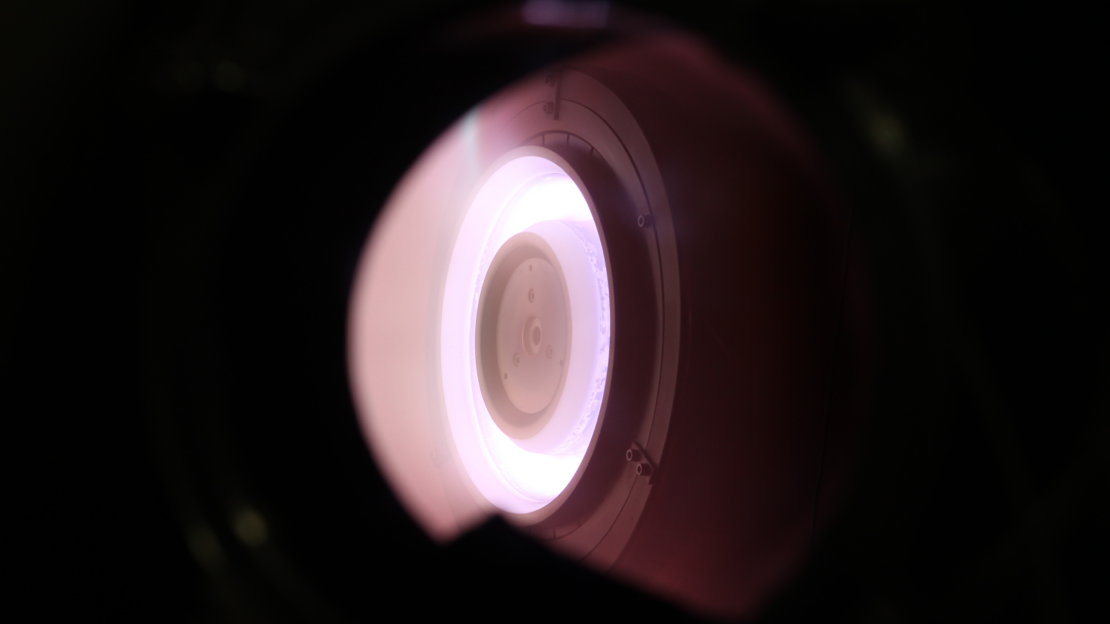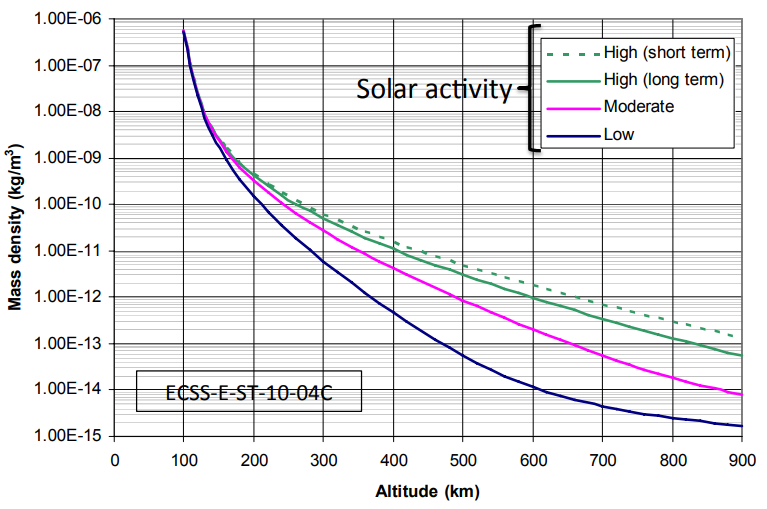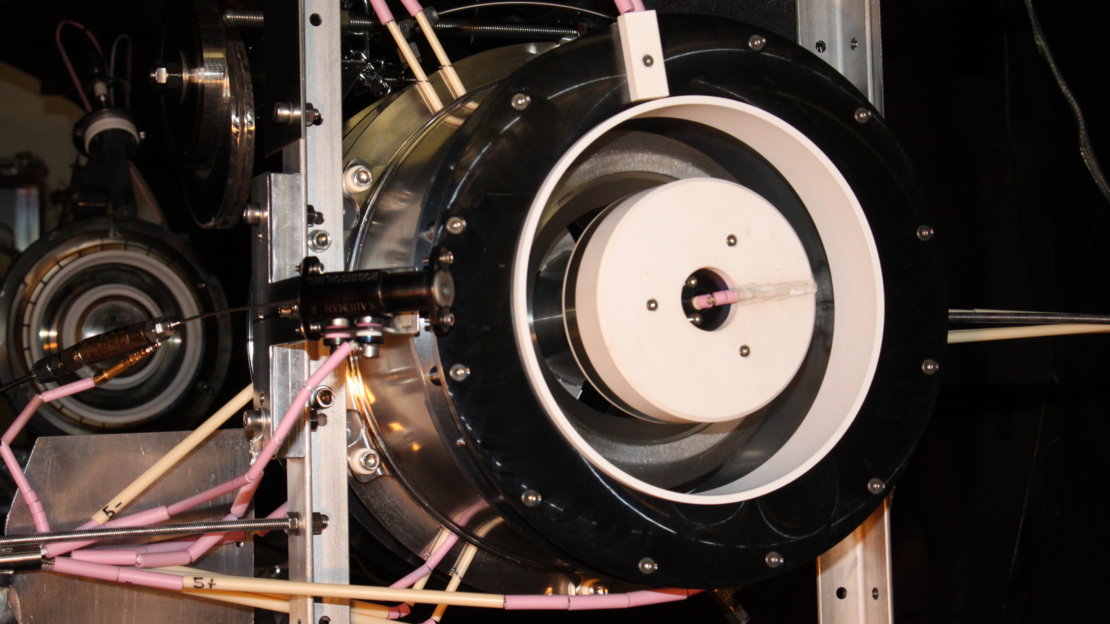The ESA has tested the ion engine running on air.

Satellite with an electric motor that runs on air
The European Space Agency (ESA) conducted the world's first test of an electric motor, which uses rarefied air molecules as a “fuel” (working medium). This technology is known as Air-Breathing Electric Propulsion or Atmosphere-Breathing Electric Propulsion (ABEP). In the future, such engines can be installed on satellites that rotate rapidly in very low orbits.
For example, the GOCE ion-powered spacecraft for mapping the earth's gravity for 56 months worked at an altitude of 260 km. His lifespan was limited by the stock of xenon: it was possible to take with him only 40 kg. When the xenon ended - the satellite fell powerlessly and burned in the atmosphere, and the mission had to be completed. There will be no such problems with air, because even in the upper atmosphere there are enough oxygen molecules. So if the satellite is forced to de-orbit, the reason for this will be not the lack of "fuel", but the wear of components or other reasons.
In fact, this is a new class of satellites that can work for a very long time in a very low orbit. And that is not all. Such devices are able to work in the upper atmosphere of other planets. For example, on carbon dioxide in the atmosphere of Mars.
')

Ion engine on the air, the photo was taken during the test
An ion engine is a type of electric rocket engine whose principle of operation is based on the creation of jet thrust based on ionized gas accelerated to high speeds in an electric field. There are no moving parts, and to create thrust you only need to power up the solar panels to the coils and electrodes. The engine design "particle flow generator" provides a high-speed flow of molecules for the intake system developed by the Polish company QuinteScience. Then the particles are ionized and thrown out, creating cravings.

For this project, ESA engineers redesigned the ion engine so that it could use oxygen molecules at a concentration at which the satellite could capture them at an altitude of 200 km at a speed of 7 km / s.
The density of the atmosphere depends on the height and solar activity. In addition, the location and time of year are affected. The graphs show the approximate density of the atmosphere, depending on the height and solar activity.

To ensure that the spacecraft is kept at a given height, the thrust force of the engine should be no less than the maximum value of aerodynamic resistance under conditions of maximum solar and geomagnetic activity, and to estimate the required flow rate of the working fluid or engine life, it is necessary to use the average value of aerodynamic resistance. The table shows the resistance force corresponding to the minimum and maximum solar and geomagnetic activity. The minimum, maximum and average values were calculated for a period of one year on a uniform geographic grid for each level of solar and geomagnetic activity ( source ).

An experimental model of the engine ESA manufactured by the Italian company Sitael. This is a two-stage engine that provides better ionization and particle acceleration that traditional systems of electric motors. Preliminary design tested in computer simulation, and then it was time for real tests.
Testing was carried out in a vacuum chamber (in the photo) with a simulation of conditions at an altitude of 200 km.

Experimental setup
At the first stage, the engine was tested on xenon from a particle beam generator. Then xenon partially replaced by a nitrogen-oxygen mixture. When the color of the jet stream from the engine changed from xenon blue to purple, it became clear that the engine was running on air.

Engine inside the vacuum chamber
In the end, the engine was repeatedly launched purely on atmospheric gas to prove the viability of the idea. Thus, the use of air as a “fuel” (working medium) for an electric motor is no longer a fantasy, but a completely working idea.
Source: https://habr.com/ru/post/410861/
All Articles